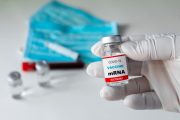The World Health Organization (WHO) declared Monday that the Zika virus is a public health emergency of international concern, as it is suspected of causing significant birth defects. The designation is only the fourth one ever to be made by the WHO and paves the way to increase funding and manpower to stop the spread of the virus, which has already made its way to the United States. But while the WHO struggles to find a way to contain the virus, some contend that the ban on DDT has allowed mosquito-borne pathogens such as this to run rampant and that the ban should be permanently lifted.
The Washington Post reports:
The WHO declaration represents its highest level of alert and is only invoked in response to the most dire threats. The first time was in 2009 during the H1N1 influenza epidemic that is believed to have infected up to 200 million worldwide; the second in May 2014 when a paralyzing form of polio re-emerged in Pakistan and Syria; and the third in August 2014 with Ebola in West Africa.
Health officials are extremely concerned by the causal relationship between ZIka and a congenital condition called microcephaly, in which babies are born with abnormally small heads and suffer from brain damage. The Zika virus is projected to infect up to four million people by the year’s end, according to the WHO.
“Even the clusters of microcephaly alone are enough to declare a public health emergency because of its heavy burden” on women, families and the community,” stated WHO Director-General Margaret Chan.
According to the Washington Post, health officials are surprised by the sudden development of the virus as a global concern, as it has popped up all over the world for decades, with its victims suffering only mild symptoms that subsided, resulting in complete recovery, with the exception of rare complications. But the recent outbreak seems to coincide with increased reports of brain-damaged infants, provoking concerns that Zika’s impact on fetal development is both significant and dangerous.
In January, the U.S. Centers for Disease Control and Prevention issued an advisory asking pregnant women to avoid traveling to areas where the virus has been active, including two dozen countries and territories in Central America, South America, and the Caribbean.
In contrast, the WHO said on Monday that while there is no need for travel or trade restrictions at this time, pregnant women in the regions should continue to take preventative measures to avoid contact with mosquitoes.
But the role that mosquitoes have played in the spread of this dangerous virus has some revisiting the decision to ban the powerful insecticide DDT that in the past has saved countless lives. President Nixon’s newly formed Environmental Protection Agency banned DDT in 1972. Other countries followed suit, and in 2001 DDT was banned for agriculture by the Stockholm Convention on Persistent Organic Pollutants.
In a 2013 report, The New American’s Ed Hiserodt and Rebecca Terrell analyzed the impact that the DDT ban has had on the spread of diseases:
When DDT first came into use as a pesticide, many called it miraculous, which was hardly an exaggeration considered in perspective. Until then, yellow fever claimed so many lives it was known in the United States as the “Scourge of the South.” The French abandoned efforts in the 1880s to construct the Panama Canal because malaria killed so many workers. Typhus, the disease that took the life of diarist Anne Frank, was once feared as deadlier than any weapon of war in Europe. Yet in a period of three weeks in 1943, DDT wiped out one of history’s deadliest typhus outbreaks in Naples, Italy. In fact, DDT’s effectiveness has made all these disease names as antiquated to our ears as scurvy and the plague.
DDT nearly eradicated malaria until its ban, which once again brought about a rise in malaria deaths back to pre-DDT levels by 1997.
Opponents of DDT point to evidence found in Rachel Carson’s 1962 book Silent Spring, which unfortunately relied on fallacies and intentional deceit to convince the world that DDT is toxic to humans and a carcinogen and that it accumulates in the environment, becoming concentrated in the food chain, despite evidence to the contrary.
The Economic Policies for the 21st Century at the Manhattan Institute refers to an article in the British medical journal The Lancet by Professor A.G. Smith of Leicester University, which reads,
The early toxicological information on DDT was reassuring; it seemed that acute risks to health were small. If the huge amounts of DDT used are taken into account, the safety record for human beings is extremely good. In the 1940s many people were deliberately exposed to high concentrations of DDT thorough dusting programmes or impregnation of clothes, without any apparent ill effect…In summary, DDT can cause toxicological effects but the effects on human beings at likely exposure are very slight.
An outspoken critic of Carson’s book was J. Gordon Edwards, Ph.D., of San Jose State University, who during his campaign to advocate for DDT would eat a tablespoon of DDT powder during public lectures to show its non-toxicity. Dr. Edwards died at the age of 84 while climbing Divide Mountain with his wife, not from health issues related to this practice.
And while some critics of DDT cited the health concerns raised in Carson’s book, others were vocal that their issue with DDT was that it managed to allow populations to explode by eliminating diseases that kept populations down, undermining the population control agenda.
“My chief quarrel with DDT in hindsight is that it has greatly added to the population problem,” complained Alexander King, co-founder of the Club of Rome, a global think tank dedicated to population reduction.
Similarly, Malthusian Paul Ehrlich warned in his 1968 best-selling book The Population Bomb that “every life saved this year in a poor country diminishes the quality of life for subsequent generations,” arguing against DDT as “exported death control.”
And Sierra Club Director Michael McCloskey explained the Sierra Club’s opposition to DDT in 1971, asserting, “By using DDT, we reduce mortality rates in underdeveloped countries without the consideration of how to support the increase in populations.”
The New American’s Terrell and Hiserodt noted that the anti-DDT hysteria has resulted in the explosion of malaria once again, and that organizations such as WHO, UNICEF, and USAID prefer to fund “ineffective insecticide treated nets of dead-end vaccine research while limiting funds to investigate alternative insecticides” rather than to bring back DDT.
And one effect of the anti-DDT hysteria, as Brazilian Health Minister Marcelo Castro told Reuters, is that Brazil is “badly losing” the battle against the mosquito blamed for spreading the Zika virus.
“That concern about DDT has to be reconsidered in the public health context,” declared Dr. Lyle Petersen, director of the division of vector-borne diseases at the Centers for Disease Control and Prevention.
Likewise, Dr. Gilbert Ross, senior director of medicine and public health at the American Council on Science and Health, stated that DDT remains the only hope of keeping the Zika virus in check, as it will likely take at least a decade to find a vaccine for the virus and that the mosquito as well as the disease “will gain footholds in the U.S., as did the West Nile virus.”
Dr. Ross wrote, “While DDT is not perfect (some resistance to the chemical may have emerged in the past), it may represent the best chance to hold this epidemic at least partly in check.”
Ross also noted that the anti-DDT movement was proof that the green movement cares more about its agenda than it does humanity, and that the Zika virus is a good reason to bring back DDT:
The green movement decided, decades ago, that the lives of sub-Saharan Africans did not matter as much as eggshell thinning, and millions subsequently died from malaria. Now is the time for all to agree that the enviro-antipathy to DDT is baseless, and that if the impending Zika catastrophe is to be prevented in time, we need to use it.





